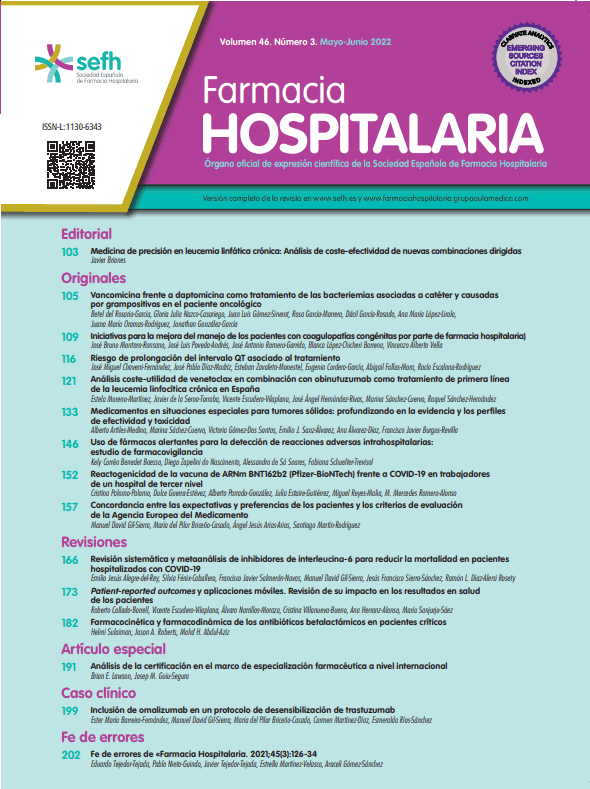To determine the duration of and reasons behind changing the various combinations of drugs used for the initiation of antiretroviral treatment in naïıve patients.
MethodsA retrospective observational study that included all patients with HIV infection who started antiretroviral therapy in a high-tech university reference hospital during the period from 1 January 2003 and 31 December 2005. Patients were followed until 31 December 2008. To estimate the cumulative probability of discontinuation the Kaplan- Meier method was used.
ResultsA total of 441 patients were included. The average duration of the first treatment was 384 (interquartile interval 84–1290) days. The regimen based on non-nucleoside reverse transcriptase inhibitors and those that included as nucleosides abacavir or tenofovir in combination with lamivudine or emtricitabine showed a significantly longer duration than the rest. The main reasons for termination were the side effects, although in a lesser percentage than that obtained in previous studies. No associations were found between the rest of the characteristics of the patients or of the treatment and the risk of termination.
DiscussionAlthough the duration of the first antiretroviral treatment remains short, currently fewer changes are made due to side effects and due to loss to follow-up. The reasons may be better tolerance and less complexity. However, more studies are needed to determine the benefits of one regimen or another, and to be able to generalise the results.
Conocer la duración y los motivos de cambio de las distintas combinaciones de fármacos utilizadas como inicio del tratamiento antirretroviral en pacientes naive.
MétodosEstudio observacional y retrospectivo en el que se incluyeron todos los pacientes con infección por VIH que iniciaron tratamiento antirretroviral en un hospital universitario de referencia de alta tecnología durante el periodo comprendido entre el 1 de enero de 2003 y el 31 de diciembre de 2005. El seguimiento se realizó hasta el 31 de diciembre de 2008. Para estimar la probabilidad acumulada de interrupción del tratamiento se utilizó el método de Kaplan-Meier.
ResultadosSe incluyeron un total de 441 pacientes. La mediana de duración del primer tratamiento fue de 384 (intervalo intercuartil 84–1.290) días. Los regímenes basados en inhibidores de la transcriptasa inversa no análogos de nucleósidos y aquellos que incluían como análogos de nucleósidos abacavir o tenofovir en combinación con lamivudina o emtricitabina presentaron una duración significativamente mayor que el resto. Los principales motivos de finalización fueron las reacciones adversas aunque en un porcentaje menor que el obtenido en estudios anteriores. No se hallaron asociaciones entre el resto de características de los pacientes o del tratamiento y el riesgo de interrupción.
DiscusiónAunque la duración del primer tratamiento antirretroviral sigue siendo corta, actualmente se producen menos cambios por reacciones adversas y por pérdidas de seguimiento. Los motivos podrían ser una mejor tolerancia y una menor complejidad. No obstante, son necesarios más estudios para determinar el beneficio de un régimen frente a otro y poder generalizar estos resultados.






